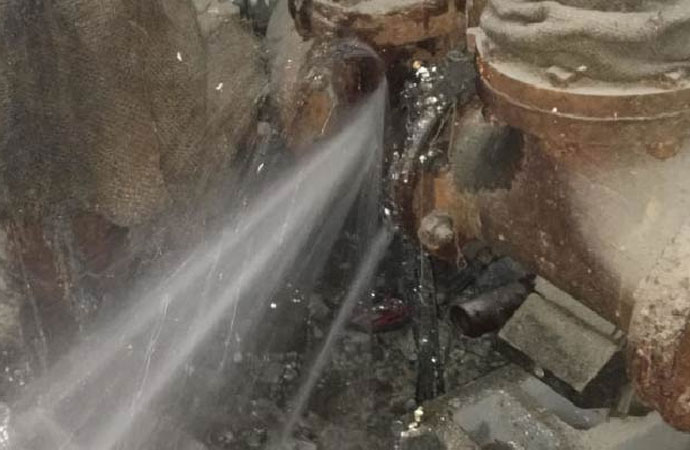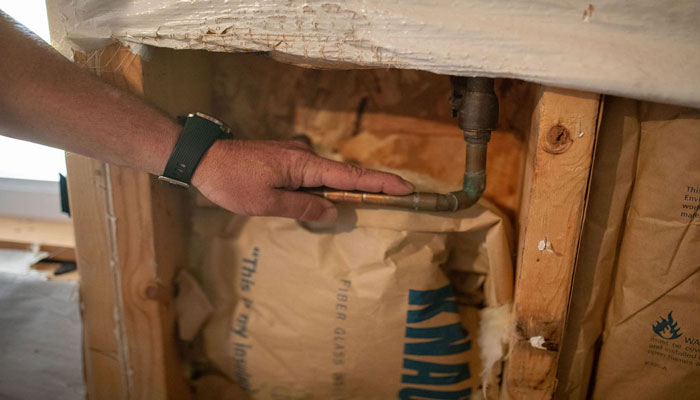Quick-Response Plumbing: Tips for Identifying and Dealing With Burst Pipes
Quick-Response Plumbing: Tips for Identifying and Dealing With Burst Pipes
Blog Article
How do you really feel in regards to How to Prepare for Your Dishwasher Installation?

A ruptured pipeline is a major emergency; you can just stand as you enjoy water you pay dearly to rejoin with the earth. In even worse situations, you notice a swimming pool on your kitchen area flooring, which is an excellent journey danger, especially if you have youngsters around. If the pipe that ruptured was in your wall surfaces, problem: you might require to repaint that whole section.
Just how can a disaster like a ruptured pipe be protected against as well as taken care of? Well, by listening to your specialist emergency plumbings and also complying with these regulations.
Exactly how do I recognize when my pipes have ruptured?
Varying water stress
Pipes do not simply burst in a day. You may have observed that your kitchen tap or shower does not run instantly when you transform the faucet. It might stop for a few secs and then blast you with even more pressure than typical.
In various other instances, the water may appear normal initially, after that drop in stress after a few seconds.
Damp walls as well as water spots
Prior to a pipeline ruptureds, it will certainly leakage, the majority of times. If this relentless dripping goes unnoticed, the leakage might graduate into a vast gash in your pipe. One very easy way to avoid this emergency is to watch out for damp wall surfaces ad water stains. These water stains will lead you right to the leak.
Puddles under pipes and sinks
When a pipeline ruptureds, the discharge creates a pool. It might show up that the pool is growing in size, and no matter how many times you mop the puddle, in a couple of mins, there's an additional one waiting to be cleansed. Usually, you might not be able to trace the puddle to any kind of noticeable pipelines. This is an indicator to call a specialist plumber.
Untraceable trickling sounds
Pipeline ruptureds can take place in one of the most undesirable areas, like within concrete, inside wall surfaces, or under sinks. When your home goes silent, you may have the ability to listen to an aggravatingly consistent leaking noise. Also after you have actually inspected your shower head as well as kitchen faucet, the trickling may continue.
Dear viewers, the leaking may be coming from a pipeline inside your walls. There isn't much you can do about that, other than inform a professional plumber.
Shut off the Water
When water ices up, it broadens in quantity by regarding 9 percent. And it increases with remarkable pressure: The pressure inside pipelines may go from 40 pounds per square inch to 40,000 psi! No pipeline can hold that much pressure, so it bursts. The break may occur where the ice kinds, however more often, it takes place where water stress finds a weak point in the pipeline. That may be inches or perhaps feet from the icy location. Find the water shutoff valve and also turn off the water to stop more damage. You may also require to turn off the electricity too, depending upon where the leakages occurs and also exactly how big it is.
Infected water
Many people think a burst pipeline is a one-way outlet. Fairly the contrary. As water drains of the hole or gash in your plumbing system, impurities find their way in.
Your water might be polluted from the resource, so if you can, check if your water storage tank has any kind of problems. Nevertheless, if your alcohol consumption water is supplied as well as detoxified by the city government, you must call your plumber immediately if you see or smell anything amusing in your water.
What do I do when I spot a burst pipeline?
Your water meter will continue to run also while your water wastes. To minimize your losses, discover the primary controls and also turn the supply off. The water pipe are an above-ground structure at the edge of your residential property.
How to Fix & Detect a Leaking Pipe
How Do I Know if a Pipe is Leaking?
Leak detection tests can help you determine if your pipe has a leak. Even if you don’t see an apparent leak, you should still conduct leak detection tests regularly to save water and money—and prevent major damage to your home.
Water meter. It can be helpful to figure out what your usual water meter usage numbers are and then monitor them regularly. To monitor your meter, first, turn off all water faucets in your home. Check the meter and write down the numbers. In a few hours, check the meter again. If the numbers have changed, you have a leak. Water gauge. Use a water gauge to test your water pressure. Your showerhead should produce a certain amount of water pressure based on its model and design. If the pressure is lower than it is supposed to be for that specific showerhead, your home likely has a leak. Puddles. Look inside your bathroom, laundry, and kitchen sink cabinets. Puddles around the cabinets or around toilets, tubs, showers, and washing machines indicate the presence of a leaking pipe. You may also notice loose tiles, peeling or flaking paint, or mold caused by water accumulation. Napkin test. Even if you don’t see any puddles, you may still have a leak. You can test for water leaks in the bathroom, laundry, and kitchen by wiping below-sink connections with a napkin, paper towel, or piece of toilet paper. If it becomes damp, you probably have a leaking pipe under the sink. Discolored walls. Walls that are discolored—usually with brown or yellow stains—or bulging might mean that they have been impacted by water damage caused by a leaking pipe. Smell. A leaky pipe will create sitting water, and over time, that water may develop a musty smell. If your home smells musty, but you can’t locate the source, it may be due to a leak. Steps for Fixing a Leaking Pipe
A leaky drain can be remedied by tightening the pipe base, replacing the drain seal, caulking the rim, and tightening the pipe nut. Similarly, a leaking toilet pipe can be treated by tightening the packing nut. You may also need to replace the valve. A leaky faucet may just need tightening or replacement of the washers. If that doesn’t work, consider replacing your faucet. If your pipe has a hole in it, you may want to use a pipe leak sealer or pipe leak tape. This quick fix for water pipe leaks can also temporarily fix a copper pipe leak. https://www.ahs.com/home-matters/quick-tips/how-to-tell-if-pipes-are-leaking/

As a serious person who reads on How to Prepare for Your Dishwasher Installation, I imagined sharing that excerpt was smart. Are you aware of another person who is involved in the topic? Why not promote it. Thanks so much for your time spent reading it.
See Availability
Report this page